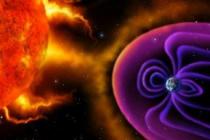Now that we have examined the functions of the mineral elements necessary for the normal growth of plants, we should discuss the mechanisms of their entry into plants and the structural elements along which they have to move. Minerals are usually absorbed from the soil by the roots. They can also be supplied in small amounts through the leaves, so foliar application of some trace elements has become a standard agricultural method. Minerals almost always enter plants in the form of ions. These ions must first cross the membrane and the plasmalemma in order to enter the cytoplasm: then, if necessary, pass through the membrane surrounding the vacuole (tonoplast) or some cellular organelle in order to end up in one or another internal compartment.
The study of the issue of transport of elements is one of the main ones in the problem of mineral nutrition. This is predetermined by the following circumstances. First, the essence of plant nutrition is the intake and inclusion of mineral elements in the metabolism as a result of exchange between the organism and the environment. Secondly, the study of the process of transport of elements is associated with the elucidation of the properties and functions of the cell membrane, membrane formations, the connection between cells and tissues. Third, clarification of issues related to transport brings us closer to the purposeful management of crop productivity.
Hydrated state of ions.The transport of ions across the membrane is associated with certain difficulties. One of the difficulties is the presence of hydrated water, which surrounds the ion and significantly increases its volume.
Consider monovalent ions, in particular, Li +, Na +, K +, Rb + and Cs + cations: lithium has the lightest nucleus, and cesium has the heaviest. As the mass number increases, so does the number of electrons that surround the nucleus and the volume of space occupied by the electron orbitals. Since the density of the electron cloud surrounding the core is low, it can be assumed that the core is more accessible to external influences. This dependence is reflected in the values \u200b\u200bof the radii of hydrated ions: Li + - 0.06; Na + - 0.095; K + - 0.133; Rb + - 0.148; Cs + - 169 nm.
In aqueous solutions, water molecules are held near ions by electrostatic forces, the source of which are charged particles of the atomic nucleus. The closer the water molecules can come to the charged atomic nucleus, the stronger they bind and the more the amount of free energy changes due to hydration. Thus, lithium has water molecules closer to the core, which means that the hydration shell of lithium contains more water molecules. It is known that water molecules are dipoles. Near the cations, all the nearest water molecules are oriented with negative poles inward, and near anions, the positive poles of water molecules are directed inward (Fig. 5.1).
This internal structured layer of water molecules, strongly associated with ions, is called the primary shell.
At some distance, exceeding the thickness of the primary shell, the electric field strength decreases slightly, which leads to a change in the normal orientation of water molecules. Because of this, a secondary shell appears around the ion (Fig. 5.2).
Thus, due to the hydration shell, the size of the ions is greatly increased. There is an inverse relationship between the radii of hydrated and non-hydrated alkali metal cations, i.e., a hydrated ion with a smaller crystal radius is larger. The radii of the hydrated ions are difficult to calculate; data from different authors vary considerably. The mobility of ions gives an idea of \u200b\u200btheir relative sizes (Table 5.2).
Table 5.2
Mobility of ions in aqueous solutions (25 О С)
Currently, it is generally accepted that ions and various substances pass through the membrane in several ways, the main ones of which are:
1. Simple diffusion through the lipid phase if the substance is soluble in lipids (this does not apply to ions).
2. Facilitated diffusion of hydrophilic substances using lipophilic carriers (transporters).
3. Simple diffusion of ions through hydrophilic pores (for example, through ion channels).
4. Transfer of substances with the participation of active complexes (pumps).
5. Transport of substances by pinocytosis under conditions of significant changes in membrane architecture.
As for the driving forces of membrane transport, two mechanisms are distinguished.
Passive transport is the movement of substances by diffusion along the gradient of the electrochemical potential without energy consumption (simple and, to some extent, facilitated diffusion).
Active transport – movement of substances against the gradient of electrochemical potential with the expenditure of metabolic energy, usually in the form of ATP or redox chains.
In order to understand the mechanisms of transmembrane transfer of mineral nutrients, let us dwell on some of the physicochemical laws governing the movement of ions in solution and membrane. Let's start with the processes of passive transport (in particular, remember the laws of diffusion).
According to Fick's first law, the flux (Ф) is directly proportional to the diffusion coefficient D and the concentration gradient dC / dx at point x at a given time.
The transport of assimilates - far and near - is always associated with the expenditure of energy. First, assimilates (glucose) from the places of their formation pass along the symplast to the companion cells and the parenchymal cells surrounding the sieve tubes. In these cells, glucose is first converted into sucrose, which then, as a result of active transfer, is "pumped" into the sieve tubes. Long-distance transport of sugars through sieve tubes is carried out in the form of sucrose. In places of consumption of assimilates or deposits of storage substances, assimilates pass from the sieve tubes and reach a specific destination along the symplastic pathway also in the form of glucose.
Growing organs and tissues - leaves, meristems - actively attract assimilates from their storage sites, as well as from leaves that have finished growing.
The main pathway for long-range ion transport is the transpiration current along the xylem. For short-range transport, symplast and apoplast are used at the root. The main filtering barrier in the path of ions in the root is the endoderm with its Caspari bands. Through the endoderm, ions penetrate through the passage cells by active transport. The transfer of ions into the vessels can be passive or active. In the shoot axis - the stem - ions are actively extracted from the vessels and transported horizontally, mainly along the medullary rays. In the leaf, the ions leave the ends of the vessels passively together with the transpiration current, and during the growing season they can accumulate in large quantities. Some of the accumulated ions (Ca and Mg) are removed along with autumn leaf fall, the other part by this time is removed from the leaves.
The main engine of transpiration current is
The movement of substances through cells and tissues. Various substances are constantly moving inside living cells and between individual cells. Some of them enter the cell, others are removed from it. For example, substances that are formed in a plant move inside a cell, between neighboring cells, from one organ to another. Thus, the products of photosynthesis from leaf cells are transported to non-green parts of the plant (root, stem, flowers).
The transport of substances is facilitated by the structure of the cell membrane through which certain substances pass. The cytoplasm of neighboring cells communicates with each other by the thinnest tubules that densely penetrate the cell wall.
The movement of mineral and organic substances between organs, In order to understand how substances move between the organs of a plant, remember the internal structure and functions of the root, stem and leaf.
An aqueous solution of minerals from the soil is absorbed by the root hairs of the root suction zone. Further, through the cells of the root cortex, this solution enters the vessels of the central cylinder.
Due to the root pressure in the root cells, the soil solution of salts flows through the vessels to the aboveground part of the plant.
Root pressure can be measured by attaching a pressure gauge tube (pressure measuring device) to the stump of a freshly cut plant. In herbaceous plants, the root pressure reaches 2-3 atmospheres, in woody plants even more. Through the vessels, water moves to the leaves, from which it evaporates through the stomata. This direction of movement of solutions is called ascending flow.
The ascending flow of substances is significantly affected by the evaporation of water by the leaves, which creates the so-called suction force of the leaves. The more water the leaves evaporate, the more intensively the root system absorbs it from the soil and the sooner the soil solution enters the aboveground parts.
From the leaves along the stem in the direction of the root system, flowers or fruits, organic substances are transported - the products of photosynthesis. The amount of organic matter formed in one daylight hours in the chloroplast exceeds its mass by several times. Organic matter flows through sieve tubes from the leaves to other parts of the plant, where they are consumed or stored in reserve (root, stem, fruits). This flow is called downstream.
Water and dissolved in it mineral and organic substances can move in the plant also in a horizontal direction. At the root, for example, this transport is carried out along the cells of the cortex, and in the stem, along the cells of the medullary rays.
Knowing the paths and mechanisms of movement of substances through the plant, you can control them. So, to speed up the ripening of tomatoes, remove the lateral shoots. By shortening the shoots that appear after the formation of bunches of grapes, you can change the direction of the flow of nutrients to the fruits, the ripening of which will be significantly accelerated.
Removing excess water from the plant. You already know that during transpiration, water travels through tissues and evaporates into the atmosphere. But, considering the movement of aqueous solutions through the plant, it is necessary to remember the phenomenon that you have repeatedly observed. So, early in the morning, large drops of water can be seen on the tops of the leaves of some plants (for example, strawberries). But this is not dew. Sometimes the roots absorb more water from the soil than the leaves have time to evaporate, especially at night when the stomatal gaps are closed. Excess water is squeezed out through special holes along the edges of the leaf blades. In particular, this phenomenon can be observed in indoor plants - monstera, aruma, and also in laboratory conditions in seedlings of oats, wheat, corn.
The release of excess water in the form of drops is necessary for the normal functioning of the plant organism. Once in a sheet with an ascending current, the water must either evaporate, or stand out in the form of drops outward, if the evaporation is not intense enough.
For the implementation of vital processes, plants need water and mineral (inorganic) substances dissolved in it. The plant can get them mainly from moist soil. The roots are responsible for the absorption of the aqueous solution in plants. However, not so much the roots need water, as the leaves and other aboveground organs of the plant (developing buds, shoots, flowers, fruits). Therefore, in higher plants, in the process of evolution, a conducting system has developed, which ensures the transport of substances. It has the most complex structure in angiosperms.
For the movement of water and minerals both along the stem, and along the leaves and roots, they are responsible vessels... They are dead cells. The upward movement of water and minerals is provided by root pressure and evaporation of water from leaves.
In woody plants, the vessels are located in the wood of the stems. This can be verified by placing the branch in a tinted water solution. After a while, on the cross cut, you can see that only the wood will be colored. This means that only water and minerals dissolved in it move along it.
Moving organic matter along the stem
Photosynthesis takes place in green leaves of plants, during which organic matter is synthesized. From these substances, other organic substances are subsequently synthesized, which are used in various vital processes and for energy production.
Organic matter is needed not only by the green parts of the plant, but also by other organs and tissues. In addition, some organic matter is stored in reserve. Therefore, in plants, not only water and minerals move, but also organic matter. It usually goes in the opposite direction from the flow of the aqueous solution.
Organic substances in angiosperms move along sieve tubes... These are living cells, their transverse partitions, with which they come in contact with each other, look like a sieve.
In woody plants, sieve tubes are located in the bast, which is the part of the bark located closer to the cambium (wood is located on the inner side of the cambium).
If the bark of the plant stem is damaged deeply enough, and this prevents the outflow of organic matter, then the so-called nodules, or growths, form on the stem. They accumulate organic matter. Due to them, a wound plug is formed on the damage to the trunk. Further in this place, roots and buds can begin to develop.
Organic substances in plants often accumulate in various organs and tissues (roots, stems, core). In the spring, these substances are used to give the plant leaves and new shoots. For this, the stored organic substances must dissolve in water and move to where they are required. And it turns out that at this time organic substances move not through sieve tubes, but through vessels with water and minerals.
Plants receive carbon and oxygen primarily from the air, and the rest of the elements from the soil. Nutrients are chemical elements that a plant needs and cannot be replaced by any others. Nutrients are compounds that contain these elements. Nutrients are contained in the soil in 4 forms: 1) firmly fixed and inaccessible to the plant (for example, potassium and ammonium ions in some clay minerals, 2) hardly soluble inorganic salts (sulfates, phosphates, carbonates) and in this form are inaccessible to the plant, 3 ) adsorbed on the surface of colloids, available to plants due to ion exchange for ions released by the plant, 4) dissolved in water and therefore easily accessible to plants.
Both the cell wall and the plasmalemma play a role in the absorption of minerals.
The presence of pectin substances with carboxyl groups in the cell wall determines their property of cation exchangers (they actively bind bivalent and trivalent cations and keep them in an apparent free space immediately adjacent to the plasmalemma). Thus, due to the contact exchange with the soil solution or directly with the soil absorbing complex AUC (ions adsorbed on soil particles), hydrogen cations are exchanged for environmental cations and HCO 3 - (OH -) for mineral anions.
The movement of ions through the plasmalemma is carried out either by diffusion (along the electric and concentration gradients) - passive transport or actively - against the gradient, with the expenditure of energy (H + - ATPase, Na +, K + - ATPase, Ca 2+ - ATPase, anionic ATPase).
The proton pump plays a special role in the plasmalemma of plant cells. The membrane potential created by it can be used for the transport of cations along the electric gradient against the concentration one. And vice versa, the pH gradient serves as an energy basis for the transfer of chlorine Cl - anions, SO 4 2 - sulfate anions, etc., through the membrane. symportwith Н + (in the same direction) or for pumping out excess sodium cations into antiportwith H +. The change in pH also serves as the basis for the secondary active transport of organic substances (using carrier proteins).
Figure: 1 Mechanisms of membrane transport in the plasmalemma of plant cells: K n + - cations; A - - anions; Sug - sugar; AK - amino acids
Xylem transport
The absorbed substances and some root metabolites (amino acids) along the apoplastic and symplastic pathways, along with the water flow, enter the xylem vessels. Loading of xylem is carried out due to the functioning of one or two pumps (H + - ATPase). Xylem juice, for example, in lupine, has a pH \u003d 5.9, contains: 0.7 - 2.6 mmol / l amino acids; 2.4 - 4.6 K +; 2.2 - 2.6Na +; 0.4 - 1.8 Ca 2+; 0.3 - 1.1Mg 2+.
The composition of xylem sap depends on the type of plant and nutritional conditions, and as one moves along the xylem it changes quantitatively and qualitatively.
The unloading of xylem is due to the hydrostatic pressure in the vessels, transpiration forces and the attracting action of the surrounding cells. Substances from the apoplast enter the leaf cells as a result of the active work of the H + -pump. If, as a result of a constant flow of water in the cells, a supersaturation of salts occurs, then hardly soluble salt precipitates are formed in the leaf tissues (in the cell walls, vacuoles, mitochondria), or their outflow through the phloem occurs, or they are released by specialized salt glands and hairs.














